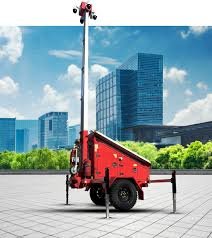Introduction
Construction drones are reshaping the construction industry by providing aerial data collection, progress monitoring, safety inspections, and precision surveying. Equipped with advanced sensors and AI technology, these unmanned aerial vehicles (UAVs) increase efficiency, reduce costs, and enhance project quality for construction firms globally. As digital transformation sweeps through the sector, construction drones are becoming indispensable for faster decision-making and safer operations on sites of all sizes.
According to Straits Research, the global construction drone sector was valued at USD 5.1 billion in 2024 and is projected to rise from USD 5.49 billion in 2025 to an estimated USD 9.86 billion by 2033, expanding at a steady CAGR of 7.6% during the forecast period (2025–2033). This robust growth is driven by the increasing adoption of AI automation, 3D mapping technologies, and integration with Building Information Modeling (BIM) systems, as well as growing demand for safety and precision.
Recent Updates and Technological Advancements
2025 marks significant breakthroughs in construction drones, leveraging AI, sensor fusion, and swarm technologies to push capabilities further:
-
AI and Autonomous Flight: Modern construction drones increasingly operate with minimal human intervention, supported by AI-powered obstacle avoidance systems, flight path optimization, and autonomous mission execution. Swarm drone technology allows multiple drones to collaborate on large sites for simultaneous data capture and monitoring, substantially accelerating project timelines.
-
LiDAR and High-Resolution Mapping: Drones equipped with LiDAR sensors produce precise 3D terrain and building scans that support design validation, earthworks calculation, and structural inspections. These detailed maps integrate with BIM software, offering real-time progress updates that improve accuracy and reduce rework.
-
Thermal Imaging and Multispectral Sensors: Thermal cameras help detect heat loss, moisture accumulation, and electrical faults on construction sites, enabling preventive maintenance and quality control. Multispectral imaging is used for environmental monitoring and site safety analysis.
-
Extended Flight Times and Heavy Payloads: Innovations in battery technology and lightweight materials have extended drone endurance, allowing longer flight missions. New models can carry sensor packages up to 6 kilograms or more, improving versatility for specialized applications.
-
Augmented Reality (AR) Integration: Operators now utilize AR-enabled controls and displays that overlay site maps, hazard zones, and project data, enhancing situational awareness and operational precision.
Leading Players and Industry Insights
Key global companies are steering the construction drone industry by innovating drone hardware, AI software, and integrated service solutions:
-
DJI (China): The dominant force with its Matrice 400 series drones tailored for construction, offering long flight times (up to 59 minutes), heavy payload capacity, and advanced obstacle detection through LiDAR and millimeter-wave radar. DJI continues to innovate with AR projection features to assist pilots in complex environments.
-
Parrot (France): Developing specialized drones like the Anafi Work for construction inspection and surveying. Parrot highlights ease of use, portability, and integration with cloud-based project management platforms.
-
Delair (France): Provides commercial-grade fixed-wing drones capable of covering large construction sites efficiently, integrating advanced data analytics and 3D modeling.
-
Autel Robotics (United States): Offers robust drones with advanced imaging, AI capabilities, and remote operation features designed for site safety and progress tracking.
-
Skydio (United States): Specializes in autonomous drones with superior AI collision avoidance, highly suitable for complex construction environments.
-
SenseFly (Switzerland): Manufactures fixed-wing drones designed for precision mapping and data gathering over large-scale construction projects.
Country-Wise Updates and Developments
-
China: DJI continues to lead, rapidly advancing drone payload capacities, AI navigation, and enterprise services to support massive infrastructure projects and smart city deployments.
-
United States: Innovation hubs fuel new autonomous drone technology startups like Skydio, and government initiatives promote the use of UAVs for infrastructure resilience and safety inspections. Regulatory reforms also support expanded commercial drone use.
-
Europe: French companies Parrot and Delair innovate with drones optimized for precision surveying and construction management software integrations. The European Union funds programs encouraging drone adoption in civil engineering projects for environmental monitoring and quality assurance.
-
Japan and South Korea: Emphasis is placed on deploying drones for hazardous site inspections and integrating drones with IoT platforms for real-time monitoring of construction sites.
-
Australia and Southeast Asia: Increasing adoption driven by infrastructure booms and labor shortages, utilizing drones for remote site monitoring and earthworks surveys.
Emerging Trends Driving Construction Drone Growth
-
Integration with BIM and Digital Twins: Construction drones feed real-time site data into BIM models and digital twin platforms, enabling live visualization and enhanced decision-making from design to execution.
-
Safety and Risk Mitigation: Drones minimize human exposure to dangerous tasks such as inspecting high structures, scaffolding, or confined spaces, reducing accidents and insurance liabilities.
-
AI-Driven Data Analytics: Automated processing of captured drone data provides actionable insights for project forecasting, resource allocation, and quality assessment.
-
Regulatory Support and Airspace Management: Progressive regulations allow more flexible drone operations near urban construction sites, complemented by unmanned traffic management (UTM) systems ensuring safe, compliant UAV activity.
-
Sustainability Focus: Drones aid in environmental impact assessments, erosion monitoring, and optimizing material usage to support green building certifications.
Conclusion
Construction drones represent a transformative force in the building industry, combining automation, AI, and advanced sensing to improve project accuracy, safety, and cost-efficiency. With leading manufacturers such as DJI, Parrot, and Skydio pushing development, and expanding government and private sector adoption worldwide, the construction drone sector is poised for substantial growth. Integration with BIM, AR, and IoT heralds a future where drone technology becomes indispensable for smarter, safer, and more sustainable construction management.
Summary Introduction
Construction drones harness AI, sensor innovation, and autonomous operation to revolutionize site surveying, safety, and project management. Global leaders from China, the US, and Europe drive rapid adoption fueled by integration with BIM and AR technologies. This evolution is reshaping how construction projects are designed, monitored, and executed worldwide.





